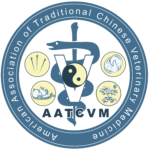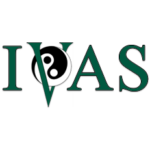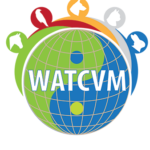THE EDITORIAL BOARD
The AJTCVM is headed by an Editor-In-Chief and an Editorial Board consisting of Executive, Associate and Assistant Editors, who manage the day-to-day activities of the journal. In addition, a Board of Scientific Reviewers affiliated with university and other research institutions, provides their expertise on the design, execution, statistical analysis and validity of outcomes and conclusions of all original studies submitted for publication. An Advisory Board of veterinarians, trained and actively practicing in one or more aspects of TCVM, provide their expertise and ensure the needs of veterinary practitioners are represented in sections of the journal designed for continuing education (e.g., Pearls from TCVM Practice, Review Articles). The Editor-In-Chief is appointed by the Board of Directors of the American Association of Traditional Chinese Veterinary Medicine (AATCVM).
Members of the Editorial Board, Advisory Board and the Board of Scientific Reviewers are appointed by the Editor-In-Chief in consultation with the AATCVM, AAVA, WATCVM and IVAS Executive Board of Directors and the AJTCVM Executive Editorial Board. Any AATCVM, AAVA, WATCVM or IVAS member can request to become an Editor at any level, an Advisory Board member or member of the Board of Scientific Reviewers, but must provide a description of their proposed contributions to the journal and be committed to fulfill the appropriate duties in a timely, thorough, accurate and professional manner. The Editor-in-Chief, with input from the current AJTCVM Editorial Board, will review all requests for additions to any AJTCVM Board.
The Editor-in-Chief can be dismissed by the AATCVM, AAVA, WATCVM and IVAS Executive Board of Directors, with input from the AJTCVM Executive Editors, based on lack of performance of duties, unethical or unprofessional behavior or engaging in activities that undermine the mission and welfare of the AJTCVM. Any member of any AJTCVM Board may be dismissed by the Editor-in-Chief, in consultation with the current AJTCVM Editorial Board, based on the lack of contributions (e.g. writing, reviewing, editing or proofing despite multiple requests), the inability to provide prompt and quality reviews consistent with the high standards of the AJTCVM, unethical or unprofessional behavior or engaging in activities that undermine the mission and welfare of the AJTCVM.
ACTIVITIES OF THE EDITOR-IN-CHIEF AND ALL ADVISORY BOARD MEMBERS
Editor-in-Chief
The Editor-in-Chief initially receives and reviews all submissions to the AJTCVM, to ensure suitability for publication in the journal and that the manuscript is in the required format, as outlined in various author guideline documents posted on the ajtcvm.org webpage. In consultation with the Executive Editors as needed, the Editor-in-Chief reserves the right to reject manuscripts without a TCVM focus or in a format or style unsuitable for the AJTCVM. The Editor-in-Chief or Associate Editors will return manuscripts with improper format to the author with general errors identified along with instructions for use of the ajtcvm.org webpage containing detailed manuscript format information. In addition, Associate Editors will be assigned to assist authors until the appropriate format and content is achieved.
The Editor-in-Chief will assign the initial editing activities to one of the Associate Editors. The Editor-in-Chief and assigned Associate Editor reserve the right to change the format, grammar or sentence structure of any part of the manuscript to comply with the guideline documents to fit the standard format and style of the AJTCVM and scientific journals in general. Several editing requests are usually made to authors from the Editor-in-Chief or Associate Editor, in the form of first, second, and third edits until the manuscript is in an acceptable standard form to send to peer reviewers.
All authors have the right to approve or disapprove all changes made to their manuscript. Subsequent corrections and suggestions from the author will be reviewed by the Editor-in-Chief, until the manuscript is approved by the authors, the Editor-in-Chief and the assigned Associate Editor. To prevent miscommunications, all assigned Associate Editors will send their edited versions to the Editor-in-Chief, who will review them and make any additional requests before a paper is sent back to the author. All communications with an author of a manuscript, during the editing and reviewing processes, will come directly from the Editor-in-Chief or Associate Editor.
Once the manuscript is in the proper format and approved by the author, Editor-in-Chief and assigned Associate Editor, the Editor-in-Chief will send the manuscript to two peer reviewers from the Board of Scientific Reviewers, Assistant Editors, Advisory Board, or published experts in the field of interest. After receipt of the reviews, the Editor-in-Chief will combine all reviewer comments to maintain reviewer anonymity and then return the manuscript to the author for revisions, unless it has been rejected. If one reviewer rejects the manuscript and one reviewer accepts it, then the Editor-in-Chief will send the manuscript to a third reviewer who will unknowingly provide a third opinion.
The decision to accept or reject a manuscript is based upon the criticisms and comments of the reviewers and final evaluations by the Executive/Associate Editors and Editor-in-Chief. The Editor-in-Chief will be responsible for ensuring all manuscripts are in final form, approved by the author and ready for publication. The Editor-in-Chief and/or appointed delegate will send, receive and maintain signed copies of all copyright documents from authors prior to publication.
The Editor-in-Chief will complete the Table of Contents, arrange all finalized approved articles by journal sections for each AJTCVM issue and submit these documents to the graphic designer for layout and galley proof creation. The Editor-in-Chief will review all changes an author wishes to make to their galley proof and reserves the right to accept or reject these changes. The Editor-in-Chief will review the final layout and content of each issue of the AJTCVM along with the Executive Editors and correct any final typographical and format errors.
The Editor-in-Chief and other Editors will solicit review articles and manuscripts for the continuing education sections of the journal from other TCVM experts when needed. The Editor-in-Chief and/or delegate will maintain records of all author communications, copyright information and other documents associated with the AJTCVM.
The Editor-in-Chief will be responsible for all communications regarding Letters to the Editor, corrections to published articles, complaints and other issues associated with the AJTCVM as they arise, with advice from the Editorial Board as needed. The Editor-in-Chief will be responsible for creating and updating all Policies and Procedures, Instructions to Authors, website information and any other information regarding the AJTCVM, with input from the Executive and Associate Editors.
The Editor-in-Chief in consultation with Executive and Associate Editors and the AATCVM, AAVA, WATCVM and IVAS Board of Directors will make all decisions regarding the future development and expansion of the AJTCVM.
Executive Editors
The Executive Editors support all the activities of the Editor-in-Chief and assist in all major final decisions regarding the AJTCVM. Upon request from the Editor-in-Chief, the Executive Editors provide advice regarding the suitability of a manuscript for publication in the AJTCVM or suggest outside assistance when necessary. The Executive Editors review all finalized and reviewed versions of a manuscript to provide their approval, suggestions or a justification for rejection. The Executive Editors review the final layout version of each AJTCVM issue along with the Editor-in-Chief and the graphic designer to correct typographical and format errors.
The Executive Editors may directly solicit articles from other TCVM experts, when needed, and then forward these to the Editor-in-Chief for processing. The Executive Editors offer advice and counsel to the Editor-in-Chief regarding communications, Letters to the Editor, corrections to published manuscripts, complaints and other issues associated with the AJTCVM as they arise. The Executive Editors provide information and editing assistance to the Editor-in-Chief for all Policies and Procedures, Instructions to Authors, website information and any other published information regarding the AJTCVM. The Executive Editors offer advice to the Editor-in-Chief regarding communications with outside agencies considering the inclusion of the AJTCVM in Pubmed (National Library of Medicine), Science Citation Index (SCI), EBSCO Information Services and other databases.
Associate Editors
The Editor-in-Chief will send manuscripts to the Associate Editors for initial editing and formatting. The Associate Editor ensures that: 1) the wording of the manuscript is easy to read and comprehend by most veterinarians, 2) there are no inconsistencies or inadvertent mistakes made by the author, 3) the article complies with the standard format as outlined in the Instructions to Authors and 4) the information presented in the article is up-to-date, complete and accurate. The Associate Editors will return the edited manuscript to the Editor-in-Chief. The Associate Editors may also submit manuscripts of their own to the Editor-in-Chief for publication but their manuscripts will be required to go through the peer review process similar to all other papers considered for publication in AJTCVM.
Contributing Assistant Editors
An Assistant Editor will be solicited to write at least 1 manuscript every 2 years for the review or continuing education sections of the AJTCVM. These manuscripts will be treated in a similar fashion as all other AJTCVM manuscripts and undergo the AJTCVM peer review process. An Assistant Editor may also serve as a peer reviewer for a manuscript as deemed appropriate by the Editor-in-Chief.
Advisory Board Members
An Advisory Board Member may serve as a peer reviewer for a manuscript as deemed appropriate by the Editor-in-Chief. An Advisory Board Member may be solicited to write a manuscript for the continuing education sections of the AJTCVM. These manuscripts will be treated in a similar fashion to all other AJTCVM manuscripts and undergo the AJTCVM peer review process. The Advisory Board Members may make recommendations to the Editor-in-Chief regarding the content of the journal to ensure that the AJTCVM meets the needs of the TCVM practitioner.
Board of Scientific Reviewers
As the name implies, members of the Board of Scientific Reviewers serve as peer reviewers primarily for original research manuscripts but may also be asked to review clinically oriented continuing education papers as suitable to the reviewer’s interest and expertise. As previously stated they ensure that the design, execution, statistical analysis and validity of the outcomes and conclusions of all original studies are of the highest scientific quality. They ensure that the reporting of clinical trials follow the “Reporting Guidelines for Randomized, Controlled, Blinded, Clinical Trials in Traditional Chinese Veterinary Medicine” document adapted from the CONSORT guidelines. Once potential reviewers have agreed to read and comment on a manuscript, they are given a 2-week deadline to complete the review.
Each reviewer evaluates the study design and execution, accuracy of results and contribution to the literature and decides whether the manuscript is accepted as is, accepted with revisions or rejected.




